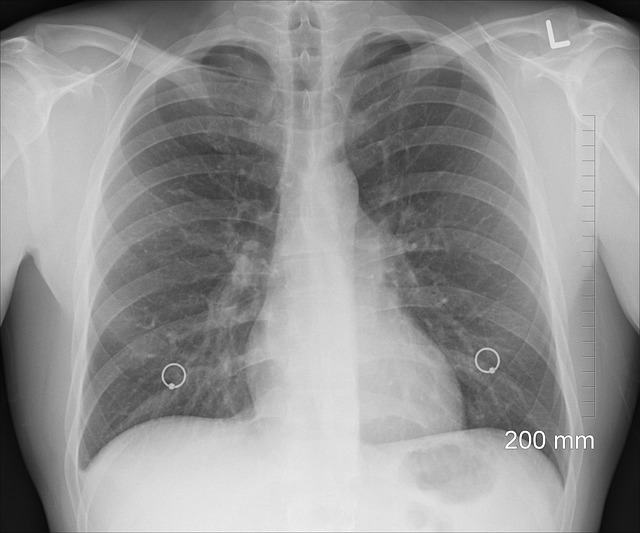
A shadow on the lung often rings alarm bells in one’s mind. The mysterious term frequently pops up in medical imaging results, leaving individuals perplexed. With the advancing realms of medical imaging, spotting a shadow on the lung has become fairly common. Yet, the actual meaning and underlying causes of this finding remain blurred to many.
What Exactly is a Shadow on the Lung?
A shadow on the lung isn’t a medical condition but rather an observation or finding. It refers to an area that appears darker on X-rays or other imaging studies. This shadow can be of various shapes and sizes, and may be due to a multitude of factors. The darkness of the shadow emanates from denser tissues or substances that absorb more radiation.
Diving into the Causes
The cause behind a shadow on the lung can range from benign to severe. Here’s a breakdown of the possible causes:
- Infections: Pulmonary infections like pneumonia or tuberculosis can lead to shadows on the lung.
- Fluid Accumulation: Fluids can accumulate in or around the lungs, resulting in a shadow.
- Tumors: Both benign and malignant tumors can cause shadows on the lung.
- Scar Tissue: Past infections or surgeries may leave scar tissue, contributing to a shadow.
- Pulmonary Edema: This condition, characterized by fluid accumulation, can cast a shadow.
- Other Lung Diseases: Various lung diseases like COPD or interstitial lung disease can be culprits.
Evaluating the Shadows: Diagnostic Journey
Pinpointing the exact cause of a shadow on the lung necessitates a thorough diagnostic process. Here’s how medical professionals typically proceed:
- Detailed History: A meticulous collection of medical history is the stepping stone.
- Physical Examination: A thorough physical examination helps in better understanding.
- Imaging Studies: Further imaging studies like CT or MRI can provide a clearer picture.
- Laboratory Tests: Blood tests and other lab tests assist in ruling out infections.
- Biopsy: In suspicious cases, a biopsy might be conducted to evaluate the tissue.
Unraveling the Implications
The implications of a shadow on the lung can be as varied as their causes. It might be a temporary issue, or indicate a chronic condition. Quick and accurate diagnosis is paramount to address any underlying issues and ensure optimal lung health.
Steering Through the Shadows: Management and Beyond
Management approaches are tailored based on the underlying cause:
- Medications: For infections or inflammations, medications are the frontline treatment.
- Surgery: In cases of tumors or severe fluid accumulation, surgery might be necessitated.
- Ongoing Monitoring: Regular follow-ups and monitoring are crucial for individuals with chronic conditions.
- Lifestyle Modifications: Embracing a healthy lifestyle can significantly improve lung health.
Decoding Shadows on the Lung: Knowledge is Power
Understanding the essence of a shadow on the lung and its potential implications arms individuals with the knowledge to better navigate any medical dialogues. It alleviates unnecessary anxiety and paves the path for informed discussions with healthcare professionals.
The Underestimated Harbingers: 5 Unrecognised Symptoms of Lung Cancer
Lung cancer often masquerades itself through subtle signs, easily dismissed or misinterpreted. However, these soft whispers from our body could be the early warnings desperately vying for attention. Being privy to such unconventional symptoms can potentially hasten the detection of lung cancer. Here, we enumerate five such lesser-known heralds of lung cancer.
1. Persistent Shoulder Pain: An unyielding shoulder pain, especially one that doesn’t relate to muscle strain or physical injury, could be echoing a cry for help from the lungs. The close proximity of lungs and shoulder anatomy can sometimes mislead pain signals.
2. Unexplained Weight Loss: A sudden and unexplained weight loss might seem like a boon but could harbor ominous undertones. When paired with other symptoms, it’s a scenario warranting a thorough check-up.
3. Finger Clubbing: The curious phenomenon of finger clubbing, characterized by swollen fingertips and nails that curve down over the tips, could be indicative of lung cancer. The mechanism is still under scrutiny, but the correlation exists.
4. Unrelenting Fatigue: Fatigue that doesn’t ease with rest and seems out of proportion to your activities could be more than just exhaustion. It could be your body’s plea for a thorough examination.
5. Veiled Hoarseness: A change in voice or hoarseness that persists may have its roots in lung health. Sometimes, lung cancer might impinge upon a nerve that controls the voice box, leading to noticeable hoarseness.
FAQs:
Q1: Can a shadow on the lung indicate lung cancer? A: Indeed, a shadow on the lung can be alarming and might indicate lung cancer. However, not all shadows are sinister. They could be due to infections, scar tissues, or other benign conditions. It’s pivotal to undergo further evaluations like CT scans, MRIs, or even a biopsy under a healthcare professional’s guidance to ascertain the cause.
Q2: Are chest X-rays conclusive for lung cancer diagnosis? A: Chest X-rays are initial tools in lung imaging but are not conclusive for a lung cancer diagnosis. Their limitation lies in their inability to catch early-stage tumors or small masses. Hence, doctors often resort to more precise imaging techniques like CT scans, MRIs, or PET scans for a more accurate insight.
Q3: What steps follow if a shadow on the lung is observed? A: Upon observing a shadow, a detailed diagnostic journey ensues which encompasses a thorough history taking, physical examination, advanced imaging studies, laboratory tests, and possibly a biopsy to delve into the root cause.
Conclusion: The journey of comprehending lung health, from shadows on the lung to recognizing unconventional symptoms of lung cancer, is a testament to the intricate and nuanced nature of healthcare. It underpins the importance of vigilance, timely diagnosis, and the profound impact of knowledge in navigating the labyrinth of medical concerns. Unveiling these obscure symptoms and understanding their potential implications is not merely an academic exercise, but a life-affirming endeavor.